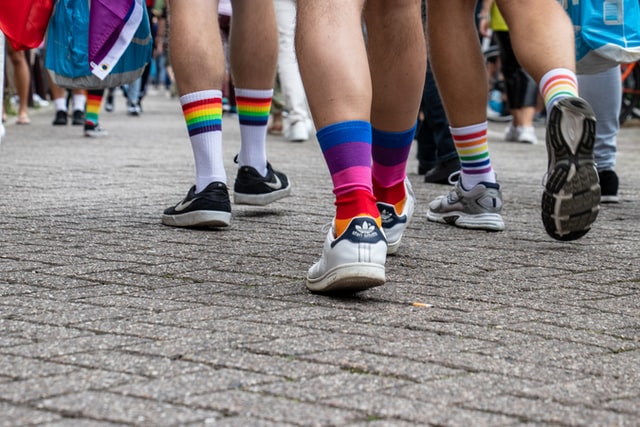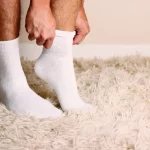
In the past decade, the market for medical socks has expanded greatly with different socks available to treat a variety of foot and leg conditions.
In particular, compression and diabetic socks are two types of socks that are commonly used for foot problems. Each function differently so deciding on which kind of socks to wear depends on the foot complication involved.
Diabetic Socks
Diabetic socks are extra comfortable socks that do not bind to the legs. Diabetic socks for men and women are worn by diabetics with impaired leg circulation. These socks have loose fit tops that allow unhindered blood flow to the feet and legs.
Another notable feature is the snug but not tight fit. A proper fit prevents loose socks from rubbing against the skin and causing blisters to form. Diabetic socks also come with a fully cushioned sole that adds comfort and protection without adding bulk.
Besides the padded bottoms, socks for diabetics also have moisture control. This is achieved by the special design and material used.
First, there is a thin mesh that allows air to flow through and cool the feet.
Secondly, a blend of materials that mix natural and synthetic fibers together is used so that sweat gets absorbed and transferred to the surface for faster drying.
Keeping the feet away from a moist environment lessens the chances of a foot infection if there happens to be an open wound present.
Lastly, diabetic socks are also more gentle on the feet than normal socks. They are made with non-prominent toe seams which significantly reduces the pressure and rubbing that can be caused by a large toe seam on the socks.
There are several variations of socks for diabetics available. This includes the use of different materials from cotton to wool blends.
Some integrate anti-microbial materials such as copper or silver directly into the fibers to further protect the feet against bacteria. There are also extra wide socks made for those that have edema.
Of course, diabetic socks are available in different colors, but doctors always recommend wearing white since this allows quick and easy detection of sores and open wounds.
Compression Socks
In contrast, compression socks are socks with gradient compression. Basically, this means that the pressure is tight at the base of the sock and gradually gets looser as it goes up the leg.
They are created from stretchable materials such as rubber, lycra, or spandex. These materials are able to provide pressure in certain areas of the leg, foot, and ankle.
Compression socks can be beneficial to people in a variety of situations.
Compression socks are worn after surgeries to prevent blood clots in the legs, which is also known as deep vein thrombosis. These socks help oxygenated blood get to the heart for proper circulation.
People also wear these socks to prevent swollen feet, particularly those in professions that require standing for long periods of time. They can also prevent blood pooling in the legs from sitting for long stretches of time such as traveling on a long-haul flight.
Those that want to prevent varicose veins can also benefit from wearing compression stockings. Even athletes are now wearing compression socks to combat muscle fatigue.
Those that wear them often feel that their feet and legs recover faster. This energized feeling can assist in the prevention of leg issues in the future.
Conclusion:
Our legs and feet are such vital parts of our body. We use them all the time. That why it is important to take good care of them by wearing proper footwear.
The benefits of both compression and diabetic socks are numerous. They both do a lot to keep the feet and legs healthy and enable us to live an active lifestyle. Discover essiac tea side effects.
About Carla Smith:
Carla Smith is the founder of Safe and Healthy Life. Her main objective is to provide informative articles, reviews, and analysis of health & fitness topics to her readers that help them to make their life easier and happier. Connect with her on Twitter.



![[Infographic] The Health Benefits of Staying Hydrated Infographic](https://www.safeandhealthylife.com/wp-content/uploads/2017/03/Infographic.png)
